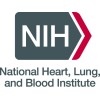
N-3 Fatty Acids for the Prevention of Atrial Fibrillation in Patients With Acute Heart Failure
Acute Heart FailureAcute Myocardial InfarctionOur study is to investigate the effect of N-3 Fatty Acids for the prevention of atrial fibrillation in patients with acute heart failure or acute myocardial infarction

Recurrence of Atrial Fibrillation in Patients With Dual-chamber Pacemakers and Drug Therapy
Atrial FibrillationComparison of AF-Burden in patients with paroxysmal atrial fibrillation and the necessity of a Dual-Chamber-Pacemaker-Therapy either with a DDD[R]60-Stimulation or AF prevention pacing. All Patients were stratified according to their existing drug therapy, e.g. Beta-Blocker or ACE-Inhibitor.

Atrial Fibrillation Incidence, Risk Factors and Genetics
Atrial FibrillationCardiovascular Diseases4 moreTo assess the risk of incident atrial fibrillation after stopping anti-hypertensive medication including beta-blockers and ACE inhibitors. Also, to assess the role of genetics in subsequent risk of stroke among patients with atrial fibrillation.

Eliquis Acute Stroke Safety Evaluation
Ischemic StrokeTransient Ischemic Attack1 moreStudy Design: This is an investigator-initiated prospective, open label, single arm phase IV study. Patients with documented non-valvular atrial fibrillation (AF) with acute TIA (defined as acute focal neurological deficits, with complete resolution of symptoms within 24 h of onset) or ischemic stroke, irrespective of infarct volume or clinical severity will be enrolled. Study Aim and Objectives: The overall aim of this study is to demonstrate the feasibility and safety of initiating apixaban therapy within 14 days of TIA or ischemic stroke regardless of the size and severity in patients with AF. Investigators will systematically assess prospectively collected CT scan images for evidence of HT and re-infarction.

Real-world Comparative Effectiveness of Stroke Prevention in Patients With Atrial Fibrillation Treated...
Atrial FibrillationExisting real-world studies have provided evidence that novel oral anticoagulants (NOACs) in general and rivaroxaban in particular are more effective and at least as safe as warfarin in non-valvular atrial fibrillation (NVAF) patients with renal impairment. Nevertheless, it is known that clinicians often hesitate to prescribe NOACs to patients with even moderate renal impairment. Therefore, it is important to investigate effectiveness and safety of rivaroxaban and other NOACs compared to vitamin-K antagonists in NVAF patients with renal dysfunction in real life setting. The primary objectives of this study are to describe the risk of ischemic stroke (IS)/ systemic embolism (SE) and intracranial hemorrhage (ICH) in patients with non-valvular atrial fibrillation (NVAF) and renal impairment initiating treatment with individual NOACs (rivaroxaban, apixaban, edoxaban) compared to phenprocoumon.

Bladder Catheters During Ablation Procedures
Atrial FibrillationCatheter Ablation1 moreInserting a Bladder catheter during catheter ablation is standard practice at most Institutions. Unfortunately, bladder catheters are associated with adverse outcomes, including catheter associated cystitis, hematuria, dysuria, and urethral damage. The investigator proposes a prospective, randomized clinical trial comparing group A that will receive a catheter during the ablation procedure and group B that will not receive the procedure. The Investigator hypothesizes the group receiving the bladder catheters will have a higher rate of complications.

Non - Invasive Evaluation of the Left Atrium Anatomy and Function
Atrial FibrillationThe aim of the study is to evaluate the accuracy and reproducibility of the left atrium (LA) anatomy and function in different populations and in patients with atrial fibrillation who have undergone cryoballoon ablation.

Patient Characteristics, Treatment Patterns And Incidence Of Events (Discontinuation, Persistence,...
Atrial FibrillationThe study aim to assess demographic and clinical characteristics , treatment patterns and as exploratory analysis will descriptively assess the time to clinical events of NVAF patients treated with oral anticoagulants (OACs) in Colombia through observational, descriptive study of a retrospective cohort of adult patients diagnosed with NVAF in selected Health Maintenance Organizations (HMO) of Colombia. The information will be used in the study comes exclusively form secondary sources: claim databases and medical records.

DELPHI in Subjects at Risk for Stroke and Dementia
StrokeHypertension10 moreThe DELPhi system is a software device that is used for the noninvasive evaluation of brain plasticity and connectivity. The DELPhi software uses EEG and TMS devices as accessories. Standard electro-physiological acquisition is performed using TMS to evoke regional neuronal potentials measured as EEG data. TMS-EEG data is analyzed with regards to conventional, well established characteristics of neuronal network plasticity and connectivity.

Inflammation, Fibrosis and Risk of Recurrence After Atrial Fibrillation Ablation
Atrial FibrillationAtrial InflammationFIBRO-RISK study aims to investigate the impact of inflammatory-mediated myocardial fibrosis on the risk of recurrence after successful ablation of atrial fibrillation. The level of systemic inflammation in the pre-ablation and immediate post-ablation period will be assessed on the basis of serum levels of inflammatory biomarkers (hs-CRP, matrix metalloproteases, interleukin-6), while the level of cardiac fibrosis will be determined based on MRI imaging associated with complex post-processing techniques for mapping myocardial fibrosis at the level of left atrium and left ventricle. At the same time, the amount of epicardial fat will serve as an indirect marker of localized inflammation and will be determined at different levels in the heart (surrounding left atrium, right atrium or the entire heart), while ventricular function will be assessed on the basis of serum levels of NT pro-BNP prior to the procedure. All these parameters will be investigated in patients with successful ablation of AF, who will be divided into 2 groups: group 1 - patients who develop AF recurrence at 1-year, and group 2 - patients with no recurrence of AF at 1-year. In all patients, the following biomarkers will be determined: serum levels of inflammatory biomarkers and NT-proBNP at 24 hours and 1 year post-procedure, the amount of myocardial fibrosis at the level of left atrium and left ventricle at baseline +/- 7 days and the amount of epicardial fat surrounding left atrium, right atrium and the entire heart at baseline +/- 7 days. The primary endpoint of the study will be represented by the rate of AF recurrence at 1-year post ablation, documented by either ECG or Holter monitoring. The secondary endpoints of the study will be: rate of re-hospitalization rate of survival without relapse rate of major adverse cardiovascular events (MACE rate, including cardiovascular death or stroke)
